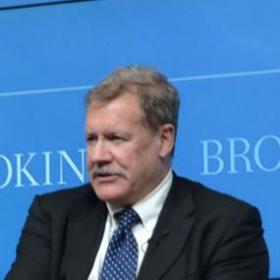
NATO Values: Osh, CSTO, Bordyuzha
Greg Austin wrote this piece for his weekly column in New Europe
Europe’s eastern frontier (now in the heartland of Asia) has exploded in the news with almost 200 people killed in communal violence in the Osh region of Kyrgyzstan. The country is a member both of the Organization for Security and Cooperation in Europe (OSCE) and of the Collective Security Treaty Organization (CSTO), set up in 2002 on the basis of a 1992 treaty. The Secretary General of CSTO, Nikolai Bordyuzha, a leading Russian military and political figure, has been coordinating the main international military and security response to the Kyrgyz crisis, culminating as of June 14 in provision by CSTO of intelligence, mobility and law enforcement assets to support local authorities.
As NATO prepares its new security concept in coming months, we will begin to hear much more about Osh, the CSTO and Bordyuzha than we might have were it not for these unhappy events. Coolness in the diplomatic relationship between CSTO and NATO until now was at the background of a June 15 article in the International Herald Tribune. In a co-authored op-ed, former US Ambassador to Russia, Jim Collins, called on NATO and the United States to “look beyond old stereotypes” and offer “full cooperation and partnership with both the CSTO and OSCE” in addressing the security problems of Central Asia and Afghanistan. The authors described the CSTO as a “natural regional partner” of NATO and the United States. Collins knew to whom he was speaking. Leading officials in the Obama administration have argued forcefully against any move to closer relations with the CSTO. Many strategic analysts in the United States believe that NATO reasons for “not recognizing the CSTO are self-evident”, as an American academic commentary as recent as June 13 argued.
Russian Ambassador to NATO, Dmitry Rogozin, had complained on June 9 just days before the violence in Osh erupted, that “we do not understand those who say the CSTO represents only Russia's interests and can therefore have no contact with NATO”. The interesting dilemma is that in NATO parlance, there are grades of partnership, defined largely by where a state sits on the spectrum of full democracy. Many in NATO attach such political significance to the term “partner” that any relationship between NATO and CSTO would be like “sleeping with the enemy”. (Some CSTO members do not meet the standards NATO sets for the highest level of partnership based on degree of protection of basic political rights.) In addition, for many members of NATO, CSTO is seen as Russia-dominated and a proof that Russia has not abandoned Soviet-era imperialist ambitions toward its near abroad.
The report issued by Madeleine Albrights’s “twelve apostles” on the future NATO security concept said rather pointedly that “on the list of NATO partners, Russia is in its own category”, mentioning later that “some governments are more sceptical than others” toward Russia.
The Albright report did however urge the alliance to “forge more formal ties” with regional security organizations including CSTO. This was the second last sentence in a nine-page section on NATO partnerships, even though CSTO is NATO’s approximate counterpart in the far east of Europe.
Political relations between this or that regional organization, even military organizations, can be rather formalistic affairs. So why does it matter whether NATO and CSTO spend much time talking with each other? The answer has three parts: heartland Asia will remain vital to the security of “old Europe”; NATO does not have the political stomach to stay there militarily; and the CSTO is an emerging security actor there. One could conclude that the reasons for stronger NATO-CSTO relations are more self-evident than the arguments against.

